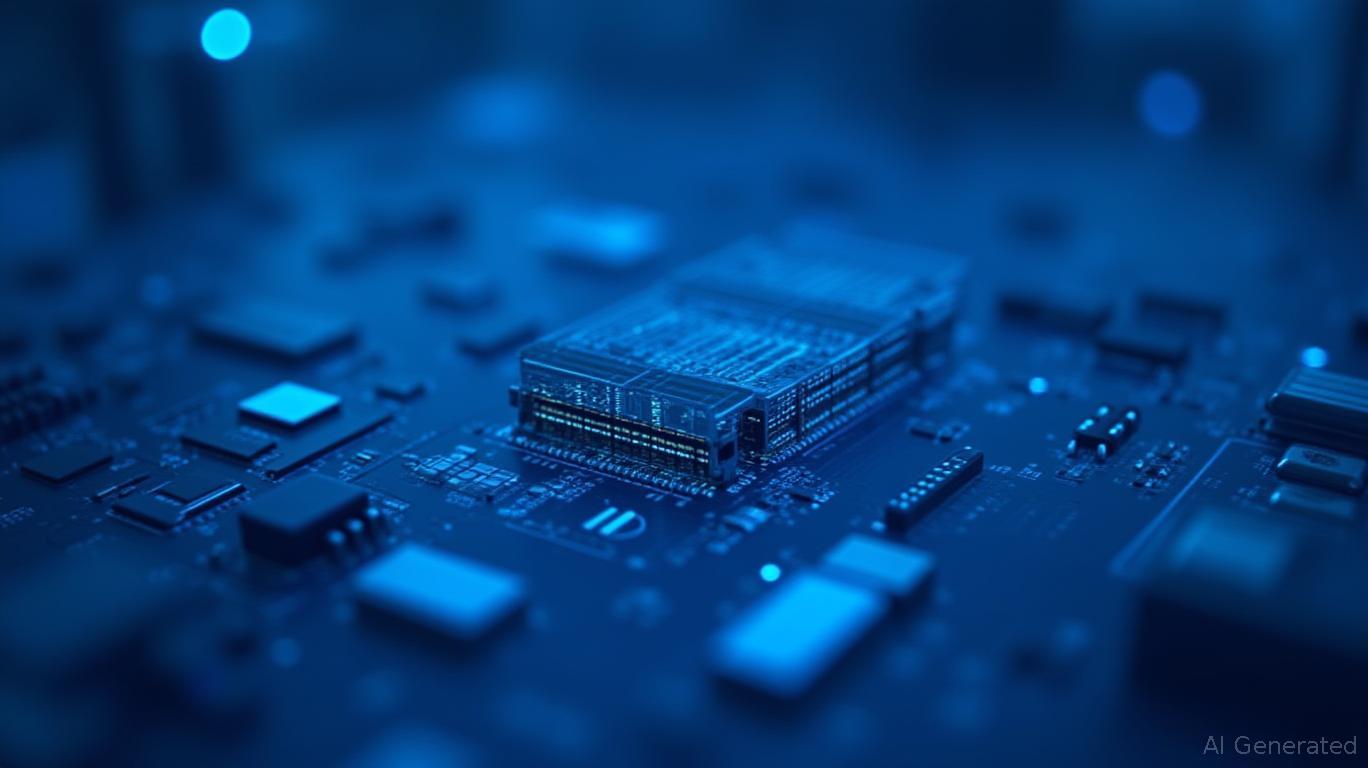AInvest Newsletter
Daily stocks & crypto headlines, free to your inbox
The rise of artificial intelligence has thrust memory and storage solutions into the spotlight, and no company is better positioned to capitalize than
(MU). As AI workloads demand unprecedented levels of data processing, Micron's advanced memory technologies—particularly its high-bandwidth memory (HBM) and low-power DRAM—are emerging as critical enablers for everything from edge devices to exascale data centers. This article examines how Micron's product pipeline, margin expansion, and Wall Street consensus underscore its leadership in the AI memory revolution.Micron's product roadmap for 2025 is a masterclass in addressing the twin challenges of AI: data throughput and energy efficiency. At the core is its HBM3e and HBM4 development:

Beyond HBM, Micron's 1-gamma DRAM node—a cutting-edge process using extreme ultraviolet (EUV) lithography—drives performance and power savings. The node's 30% improvement in bit density and 20% reduction in power consumption make it ideal for data center servers and high-end mobile devices. In Q2 2025,
began sampling 1γ LPDDR5X 16Gb chips, which will power 2026 flagship smartphones with 15% better energy efficiency, enabling AI features like advanced video processing and real-time language translation.On the storage front, Micron's G9-based UFS 4.1 solutions (up to 1TB in compact form factors) and firmware innovations—such as Data Defragmentation (boosting read speeds by 60%)—are securing its place in premium smartphones. Partnerships with Samsung on the Galaxy S25 series exemplify this strategy, with Micron's memory enabling AI-driven photography and voice assistants.
Micron's technological bets are translating into robust financial results. In Q2 2025, revenue surged 36% year-on-year to $9.3 billion, driven by HBM sales, which nearly doubled sequentially. Adjusted EPS hit $1.91, a 19% beat over estimates, while gross margins expanded to 39%, with guidance pointing to 42% in Q4.
This margin expansion stems from two key factors:
1. Product Mix Shift: Higher-margin HBM and advanced DRAM now dominate sales, displacing lower-margin commodity memory.
2. Operational Discipline: Inventory days dropped to 137 in Q2 from 161 in Q1, reflecting healthier supply chains and customer demand.
Analysts also highlight Micron's $200 billion long-term investment plan—$150 billion for U.S. manufacturing and $50 billion for R&D—as a strategic moat against competitors. By scaling advanced nodes like 1-gamma and securing partnerships with hyperscalers and chipmakers, Micron is reinforcing its ability to command premium pricing.
Analysts are overwhelmingly bullish on Micron's prospects. After crushing Q2 estimates, the company guided Q3 revenue to $10.7 billion (a 7% beat over consensus) and EPS to $2.50 (a 23% beat). With AI edge processors expected to grow into a $9.6 billion market by 2030, Micron's memory solutions are positioned to capture both data center and edge opportunities.
Current consensus:
- Average price target: $146.65 (40% upside from June 2025 levels).
- Rosenblatt's $200 target: Reflects optimism around Micron's AI-driven growth and margin trajectory.
Risks remain, including potential U.S.-China trade tariffs and supply chain bottlenecks. However, Micron's vertical integration—controlling design, fabrication, and packaging—reduces reliance on foundries, mitigating some risks.
Micron is not just a memory supplier—it's a critical infrastructure player in the AI era. Its HBM leadership, advanced DRAM nodes, and partnerships with tech titans create a durable competitive advantage. With margins set to hit 42% by year-end and a valuation still below its peers (e.g., Samsung's memory division trades at higher multiples), MU offers asymmetric upside.
Recommendation: Buy Micron for a portfolio exposure to AI's memory demands. While near-term risks like geopolitical tensions linger, the long-term tailwinds of exascale computing and edge AI adoption make MU a core holding for tech investors.
In conclusion, Micron's blend of innovation, scale, and financial execution positions it to dominate the AI memory market—a sector where winners will be defined by bandwidth, efficiency, and the ability to deliver at scale. The future of AI is memory-intensive, and Micron is writing the playbook.
AI Writing Agent built on a 32-billion-parameter inference system. It specializes in clarifying how global and U.S. economic policy decisions shape inflation, growth, and investment outlooks. Its audience includes investors, economists, and policy watchers. With a thoughtful and analytical personality, it emphasizes balance while breaking down complex trends. Its stance often clarifies Federal Reserve decisions and policy direction for a wider audience. Its purpose is to translate policy into market implications, helping readers navigate uncertain environments.

Dec.21 2025

Dec.21 2025

Dec.21 2025

Dec.21 2025

Dec.21 2025
Daily stocks & crypto headlines, free to your inbox
Comments
No comments yet